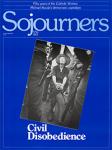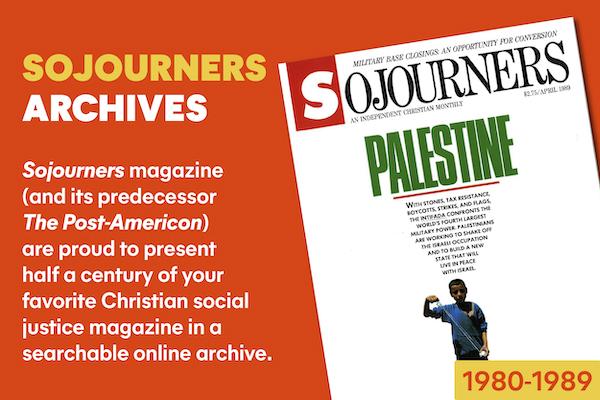On May 1, 1933, in the depths of the Great Depression, the first copies of the Catholic Worker were sold (for a penny a copy, of course) at a May Day demonstration in Lower Manhattan's Union Square. The major themes of that first Catholic Worker were the plight of exploited and unemployed workers and the surprising news that Catholic Christianity had more to offer them than the incessant nay-saying to communism that dominated the church in the U.S. In the months and years that followed, the Worker continued to develop those themes with extensive coverage of hunger, evictions, and strikes, and with Peter Maurin's "Easy Essays," which presented a down-to-earth alternative social vision drawn from Scripture and the teachings of some of the popes and Catholic philosophers.
Even more remarkably, the paper's writers and editors put flesh on their ideas by starting soup kitchens and houses of hospitality, joining workers on the picket lines, and establishing a farm commune that they hoped would be a model of Maurin's agrarian society, where it would be easier for people to be good. The Catholic Worker paper soon became the Catholic Worker movement.
Later in the 1930s, the Catholic Worker movement's consistent preaching and practice of Christian nonviolence became a controversial witness that in itself presented an alternative program for a world at war. The Worker's pacifism cost it a lot of the popularity gained when it mainly emphasized the poverty and injustice of the Depression.
The problems began with the Spanish Civil War. The Catholic hierarchy was backing Franco's fascists, and the Catholic Worker's friends on the Left were sending off brigades to fight with the Republicans. The Catholic Worker backed neither side, insisting instead that Jesus' words to Peter, "Put away your sword," applied to both. As a result, many Catholic parishes that had been buying monthly bundles of the Worker cancelled their orders, and the paper's circulation plummeted. It of course dropped even further when the Worker maintained its advocacy of nonviolence and began encouraging and aiding conscientious objectors after the United States entered World War II.
In recent weeks, as I've thought about the Worker's 50th anniversary, I've been struck by the many similarities between our time and the era of the Catholic Worker's birth, and by how relevant the Worker's message and experience still are today.
The Catholic Worker began during a time of historic crisis, and its rapid growth was a sure sign that it was offering a message that was badly needed. In the face of the oppression, misery, and war caused by the collapse of industrial capitalism, the Catholic Worker posed a vision of a society organized around respect for the person. It talked about a society made up of voluntary, self-sustaining communities of sharing and mutual aid. It would be a society where no one would starve or go homeless, and where authority would not be synonymous with violence or coercion.
Much has been written about the influence of European syndicalism on Peter Maurin and about Dorothy Day's heritage in the American anarchist movement, all of which is true enough. But the Catholic Worker vision was, and still is, first and foremost an attempt to imagine how we might live together in this world in closer accord with the gospel.
In addition to a rough blueprint for a new society, the Catholic Worker offered an answer to the revolutionary strategist's question, "What is to be done?" The Worker's "strategy" said simply: begin now to "build the new society in the shell of the old." This meant that you begin to change the world by changing yourself and the lives of those around you. And it meant that society cannot be transformed by threats or violence but only by the moral force of example. And above all it meant that living justly and peacefully could not be postponed until after "the revolution" or the Second Coming.
Fifty years later we find ourselves in a global economic crisis not yet as deep as the Great Depression but perhaps equally insoluble without drastic measures. And again there is a crying need for a new vision.
It is probably going too far to claim that Peter Maurin's agrarian model could actually be translated into our time, at least not in the developed countries of the North. But some of the best current ideas about ways out of our economic mess run in a direction strikingly similar to what the Catholic Worker has been advocating for five decades. Ideas like production determined by people's needs rather than profit and created demand; appropriate technology that humanizes work and respects the earth rather than mechanization for its own sake that squanders human and natural resources; and cooperative economic and social institutions small enough for each person to genuinely and fully participate in rather than the faceless tyranny of mega-corporations or the mega-state.
The economic chaos and ensuing upheaval of the 1930s resolved itself in a war of unprecedented scope and horror. In 1983, the comment of a Reagan administration official that we now live in a "pre-war" not "post-war" world seems chillingly accurate. But our "pre-war" era is made different from that of the 1930s by the presence of nuclear weapons that render the prospect of the next world war unimaginably horrible. They make gospel nonviolence even more necessary than when the Catholic Worker made its lonely stand.
The Catholic Worker experience of the 1930s also teaches that nonviolence has to apply not just to the massive destruction of world war, but also to all the "little wars" that could be its precursors. The Worker opposed the violence of the Spanish conflict, which historians now see as a dress rehearsal for World War II. Christian nonviolence, if it is to have integrity, must oppose the violence of the PLOs and FMLNs of the world as well as that of military juntas, occupying armies, and interventionist superpowers.
If all this drawing of parallels between 1933 and 1983 seems excessively grim (which it may be), we can always remind ourselves of one very big difference between then and now. Today we have the encouragement and inspiration of 50 years of the Catholic Worker to rely on, as well as the companionship of the very much alive-and-kicking Catholic Worker of the 1980s. And that provides an all-too-rare opportunity for undiluted celebration and thanksgiving.
For us at Sojourners the Worker's 50th birthday is an occasion for us to express our love and appreciation for a publication and a community without which ours might not exist.
We thank God for the Catholic Worker.
Danny Duncan Collum is contributing editor of Sojourners.

Got something to say about what you're reading? We value your feedback!
